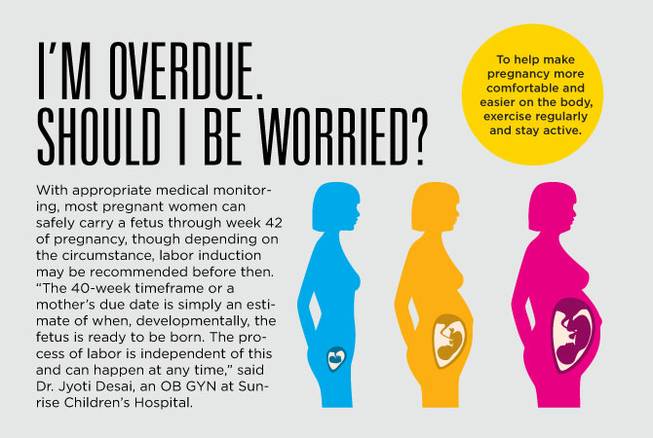
Sunday, April 10, 2016 | 2 a.m.
Pregnancy is a time of extreme growth and change for an expectant mother. Over the course of the pregnancy, the woman’s body is in a state of constant transformation to support the developing fetus.
Some of the changes can be expected, but others may come as a surprise. While every woman’s pregnancy is different, here is a guide for what mothers-to-be can anticipate as the months pass.
Trimesters and gestational age
Most people refer to pregnancy as lasting nine months starting from the day of conception, but clinically, pregnancy is measured by gestational age, which starts on the first day of the mother’s last menstrual period. “It’s common practice to do it like this because the actual date of fertilization can be difficult to know,” said Dr. Jyoti Desai, an OB GYN at Sunrise Children’s Hospital. So a full-term pregnancy, beginning with the first day of the mother’s last menstrual period, typically lasts about 10 months (40 weeks).
First trimester (0-13 weeks)
Month 1: Desai notes that most women don’t know they’re pregnant during the first month.
Month 2: The mother will have missed her first period. “This is usually when a mother will have a positive urine pregnancy test, too,” Desai said. Fatigue and nausea likely will start.
Month 3: The mother likely will experience more fatigue and nausea, and should begin prenatal care.
The first trimester is the most crucial to a fetus’s development in the womb because it is when the body structure and organ systems begin to develop. Most miscarriages and/or birth defects happen during the first trimester.
Almost immediately after conception, the mother’s hormone levels change to support the growing fetus and placenta. The mother’s heart rate and blood volume will increase, allowing the blood to carry more oxygen and nutrients to the fetus. “These changes lead to the most typical pregnancy symptoms, such as fatigue, morning sickness and nausea, headaches, constipation, breast tenderness and frequent urination,” Desai said.
Folic acid is extremely important during the first trimester of pregnancy because it contributes to the early development of a fetus’s brain and spinal cord. Most birth defects occur within the first two months of pregnancy, so if there’s even a possibility you could become pregnant, start taking folic acid daily.
Second trimester (14-27 weeks)
Month 4: Nausea should improve. The gender of the fetus will be able to be determined.
Month 5: “This is usually the beginning of ‘the bump,’ ” Desai said. Nausea should cease. Mothers will have more energy and will start to feel the fetus move in the womb.
Month 6: More rapid growth will occur, both for the fetus and the mother’s bump. A diabetes screening likely will be performed.
“The second trimester is a time of rapid growth and maturation of the fetus’s body systems. By the end of this trimester, the fetus will have a good chance of surviving outside of the womb,” Desai said.
Many of the unpleasant side effects experienced during the first trimester begin to soften or disappear. The mother likely will be less nauseated, sleep better and have more energy. “This is called the nesting period,” Desai said. New side effects that are most common during the second trimester include lower back pain, abdominal pain, leg cramps, constipation and heartburn.
Third trimester (28-40 weeks)
Month 7: The fetus will be moving and kicking regularly.
Months 8 & 9: Pelvic pressure, weak contractions of the uterus and swelling in the legs, ankles and feet all are very common. Desai also noted that during these months, the mother will gain the most weight.
The fetus finishes developing all of the systems needed for life outside the womb. Fat begins to accumulate under the skin. The fetus gains the most weight during the last month of pregnancy.
“As the uterus enlarges even more, it causes the majority of the symptoms experienced during the third trimester,” Desai said. The symptoms can include mild shortness of breath, acid reflux, hemorrhoids, urinary incontinence, varicose veins, swelling of the legs, ankles and feet, and difficulty sleeping.
To help make pregnancy more comfortable and easier on the body, Desai recommends exercising, staying active, practicing prenatal yoga and using pregnancy belts or bands.
Overdue?
With appropriate medical monitoring, most pregnant women can safely carry a fetus through week 42 of pregnancy, though depending on the circumstance, labor induction may be recommended before then. “The 40-week timeframe or a mother’s due date is simply an estimate of when, developmentally, the fetus is ready to be born. The process of labor is independent of this and can happen at any time,” Desai said.

Join the Discussion:
Check this out for a full explanation of our conversion to the LiveFyre commenting system and instructions on how to sign up for an account.
Full comments policy